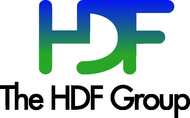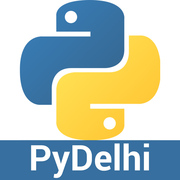| Case Studies in Industry | |||
| Integrating Scripting into Commercial Applications [More Info] Eric Jones, CEO, Enthought | |||
| Computational Supply Chain Risk Management for Open Source Software [More Info] Sebastian Benthall, Ion Channel, UC Berkeley School of Information | |||
| Python Powered Moonshots in Data Science [More Info] Eli Bressert, Stitch Fix | |||
| Data Science | |||
| To Be Announced | |||
| Visualising Big Data [More Info] Amit Kapoor | |||
| Automating Machine Learning? [More Info] Andreas Mueller | |||
| Communicating Model Results [More Info] Bargava Subramanian | |||
| Constructing Models to Deal with Missing Data [More Info] Deborah Hanus, Harvard University | |||
| Datashader: Revealing the Structure of Genuinely Big Data [More Info] James A. Bednar, Solutions Architect, Continuum Analytics and University of Edinburgh Jim Crist, Software Developer, Continuum Analytics Joseph Cottam Peter Wang | |||
| Give Your Data an Entrance Exam: Tools from Psychometrics for Data Quality Evaluation [More Info] Katie Malone, Civis Analytics | |||
| High Quality, High Performance Clustering with HDBSCAN* [More Info] Leland McInnes, Tutte Institute for Mathematics and Computing John Healy | |||
| HoloViews: Let your Data Reveal Itself [More Info] Philipp Rudiger, Software Engineer, Continuum Analytics Jean-Luc Stevens, Software Engineer, Continuum Analytics James A. Bednar, Solutions Architect, Continuum Analytics and University of Edinburgh | |||
| How to “Scrape” Together a Great Dataset Using Things You Find on the Internet: Using Python & SciPy to Predict Oscar Winners & Box Office Hits [More Info] Deborah Hanus, Harvard University | |||
| JupyterLab: Building Blocks for Interactive Computing [More Info] Brian Granger, Cal Poly State University, Project Jupyter Steven Silvester, Continuum Analytics Jason Grout, Bloomberg LP Fernando Perez, Lawrence Berkeley National Laboratory/Berkeley Institute for Data Science Sylvain Corlay Chris Colbert, Software Architect, Continuum Analytics Cameron Oelsen David Willmer Afshin Darian | |||
| Large Scale Geospatial Analytics with Python, Spark, and Impala [More Info] Evan Wyse | |||
| Python and R Together at Last: Writing Cross-Language Tools [More Info] Bill Lattner | |||
| Python at the Intersection of Data Science, Machine Learning and Cyber Anomaly Detection [More Info] Randy Paffenroth | |||
| Running Python Apps in the Browser [More Info] Almar Klein, Continuum Analytics, Freelancer | |||
| Scaling Up and Out: Programming GPU Clusters with Numba and Dask [More Info] Stanley Seibert, Continuum Analytics Siu Kwan Lam, Software Developer, Continuum Analytics | |||
| Tell Me Something I Don't Know: Analyzing OkCupid Profiles [More Info] Matar Haller, University of California, Berkeley Jaya Narasimhan, University of California, Berkeley Juan Shishido, University of California, Berkeley | |||
| Earth and Space Science | |||
| Bootstrapping an Open Source Library: How MetPy Got Up and Running with Lazy Developers [More Info] Ryan May, UCAR/Unidata | |||
| Democratizing Geostats [More Info] Nicholas Ronnei, Michigan State University | |||
| Generalized Earthquake Focal Mechanism Classification [More Info] Ben Lasscock, Geotrace Technologies | |||
| Getting More from Your Core: Processing and Analysis of Core CT Data [More Info] Brendon Hall, Enthought | |||
| HOPE: A Python Just-In-Time Compiler for Astrophysical Computations [More Info] Joel Akeret, ETH Zurich | |||
| Modeling Rate-and-State Friction with Python [More Info] John Leeman | |||
| MONTE Python for Deep Space Navigation [More Info] Jonathon Smith | |||
| Using Open Source Tools to Refactor Geoscience Education [More Info] Lindsey Heagy | |||
| Working towards all the Geophysics, but Backwards [More Info] Rowan Cockett, The University of British Columbia | |||
| Education | |||
| A Whirlwind Tour of UC Berkeley’s Data Science Education Program [More Info] Cathryn Carson, University of California, Berkeley Sam Lau, University of California, Berkeley Chris Holdgraf, University of California, Berkeley Elaine Angelino David Culler John DeNero Ryan Lovett | |||
| The FOSSEE Python Project [More Info] Prabhu Ramachandran, Enthought and IIT Bombay | |||
| Engineering | |||
| A Simulation Framework for Studying the Code Acquisition and Tracking Functions of a Global Positioning System (GPS) Receiver [More Info] Mark Wickert | |||
| PyTeCK: A Python-based Automatic Testing Package for Chemical Kinetic Models [More Info] Kyle Niemeyer, Assistant Professor, Oregon State University | |||
| UConnRCMPy: Python-based data analysis for Rapid Compression Machines [More Info] Bryan Weber, University of Connecticut Chih-Jen Sung, University of Connecticut | |||
| General | |||
| Everyone Can Be a Rocket Scientist [More Info] Oliver Nagy | |||
| QCDB: Database Tools for Managing and Harmonizing Quantum Chemistry [More Info] Lori Burns, Georgia Tech | |||
| "Labs in the Wild": Teaching Signal Processing Using Wearables and Jupyter Notebooks in the Cloud [More Info] Demba Ba, Harvard University | |||
| 3D drawing in Python: Reviving Visual [More Info] Catherine Holloway | |||
| A String Theorist's Journey with Python [More Info] Chan Park, Rutgers University | |||
| Analysis and Visualization of 3D Data with yt [More Info] Matthew Turk, University of Illinois | |||
| Community Powered Packaging with conda-forge [More Info] Philip Elson, Met Office | |||
| Composable Multi-Threading for Python Libraries [More Info] Anton Malakhov, Intel Corporation | |||
| Dask: Parallel and Distributed Computing [More Info] Matthew Rocklin, Continuum Analytics Jim Crist, Software Developer, Continuum Analytics | |||
| datreant: Persistent, Pythonic Trees for Heterogeneous Data [More Info] Sean Seyler, Arizona State University David Dotson, Arizona State University Max Linke, Max Planck Institute of Biophysics Richard Gowers, University of Manchester Oliver Beckstein, Arizona State University | |||
| Deep Learning for QSAR [More Info] Richard Lewis | |||
| Diffing and Merging Jupyter Notebooks with nbdime [More Info] Min Ragan-Kelley, IPython/Jupyter, Simula Research Lab | |||
| DyND Callables [More Info] Mark Wiebe, Thinkbox Software | |||
| Governing Open Source Projects at Scale: Lessons from Wikipedia's Growing Pains [More Info] Stuart Geiger, University of California, Berkeley, Berkeley Institute for Data Science | |||
| GR: Plotting with Python or Julia [More Info] Josef Heinen, Forschungszentrum Jülich GmbH | |||
| GT-Py: Accelerating NumPy programs on CPU&GPU with Minimal Programming Effort [More Info] Chi-keung Luk, Intel | |||
| Hacking the CPython Interpreter [More Info] James Powell | |||
| HyperSpy - How to Easily Bend Multi-dimension Data to your (Analytical) Will. [More Info] Tomas Ostasevicius, University of Cambridge | |||
| Machine Learning for Time Series Data in Python [More Info] Brett Naul, UC Berkeley | |||
| Processing a Petabyte of Planetary Pixels with Python [More Info] Samuel Skillman, Descartes Labs Michael Warren, Descartes Labs Steven Brumby, Descartes Labs Rick Chartrand, Descartes Labs Eric Chisolm, Descartes Labs Eduardo Franco, Descartes Labs Ryan Keisler, Descartes Labs Tim Kelton, Descartes Labs Caitlin Kontgis, Descartes Labs Mark Mathis, Descartes Labs Daniela Moody, Descartes Labs Xander Rudelis, Descartes Labs | |||
| Proselint: The Linting of Science Prose, and the Science of Prose Linting [More Info] Michael Pacer, University of California, Berkeley Jordan Suchow, University of California, Berkeley | |||
| Reinventing the .whl: New Developments in the Upstream Python Packaging Ecosystem [More Info] Nathaniel Smith, UC Berkeley | |||
| SymEngine: A Fast Symbolic Manipulation Library [More Info] Ondřej Čertík, Los Alamos National Laboratory Isuru Fernando Thilina Rathnayake Abhinav Agarwal, Indian Institute of Technology Kharagpur | |||
| SymPy Code Generation [More Info] Aaron Meurer, University of South Carolina, SymPy Anthony Scopatz, University of South Carolina | |||
| What's new in Spyder 3.0 [More Info] Gonzalo Peña-Castellanos, Continuum Analytics Carlos Cordoba, Software Developer, Continuum Analytics | |||
| HPC | |||
| A "BLAS" for Tensors with Portable High Performance [More Info] Devin Matthews, The University of Texas at Austin | |||
| Conduit: A Scientific Data Exchange Library for HPC Simulations [More Info] Cyrus Harrison, Lawrence Livermore National Laboratory Brian Ryujin, Lawrence Livermore National Laboratory Adam Kunen, Lawrence Livermore National Laboratory | |||
| JupyterHub as an Interactive Supercomputing Gateway [More Info] Michael Milligan, Minnesota Supercomputing Institute, University of Minnesota | |||
| Launching Python Applications on Peta-scale Massively Parallel Systems [More Info] Yu Feng, Berkeley Center for Cosmological Physics, Berkeley Institute for Data Science | |||
| Out with the Old and in with the New: Embedding Python in Old Fortran HPC Code [More Info] Brendan Smithyman, 3point Science, University of Western Ontario | |||
| Psi4: A Case Study on Modernizing and Modularizing Quantum Chemistry with Python and C++ [More Info] Daniel Smith, Georgia Institute of Technology, Software Carpentry, Psi4 Organization | |||
| PySPH: A Reproducible and High-performance Framework for Smoothed Particle Hydrodynamics [More Info] Prabhu Ramachandran, Enthought and IIT Bombay | |||
| Medicine and Biology | |||
| Emperor, Interactive Beta-diversity Exploration [More Info] Yoshiki Vazquez-Baeza, Department of Computer Science and Engineering, University of California, San Diego | |||
| HistomicsTK: Seamless Analytics for Biomedical Microscopy [More Info] Brian Helba | |||
| MDAnalysis: A Python Package for the Rapid Analysis of Molecular Dynamics Simulations [More Info] Oliver Beckstein, Arizona State University, Department of Physics Richard Gowers, University of Manchester, UK Max Linke, Max Planck Institut für Biophysik, Frankfurt, Germany Jonathan Barnoud, University of Groningen, The Netherlands Tyler Reddy, University of Oxford, UK Manuel Melo, University of Groningen, The Netherlands Sean Seyler, Arizona State University Jan Dománski, University of Oxford, UK, NIH NIDDK David Dotson, Arizona State University Sébastien Buchoux, Université de Picardie Jules Verne, France Ian Kenney, Arizona State University | |||
| QIIME 2: Self-documenting, Extensible, and Reproducible Microbiome Analysis in Python 3. [More Info] Greg Caporaso | |||
| Reproducibility | |||
| Experiments as Iterators: asyncio in Science [More Info] Daniel Allan, Brookhaven National Lab Thomas Caswell, Brookhaven National Lab Kenneth Lauer, Brookhaven National Lab | |||
| MPCite: Continuous and High-throughput Allocation of Digital Object Identifiers for Calculated and Contributed Data in the Materials Project [More Info] Patrick Huck, Lawrence Berkeley National Laboratory Anubhav Jain, Lawrence Berkeley National Laboratory Daniel Gunter, Lawrence Berkeley National Laboratory Donald Winston, Lawrence Berkeley National Laboratory Shreyas Cholia, Lawrence Berkeley National Laboratory Kristin Persson, Lawrence Berkeley National Laboratory | |||
| Reproducible, One-Button Workflows with the Jupyter Notebook and Scons [More Info] Jessica Hamrick, University of California, Berkeley | |||
| Sharing Reproducible Environments with Binder [More Info] Andrew Osheroff, HHMI Janelia | |||
| Poster Session | |||
| 1B Human Disease Cells + Fancy Camera + Python Stack = N New Disease Treatments [More Info] Blake Borgeson, Recursion Pharmaceuticals | |||
| Autocnet: A Library for Creating Sparse, Multi-Image Control Networks [More Info] Kristen Berry, USGS | |||
| It's All about the Features: Siamese Networks for a Lower Dimensional, Similarity Preserving Metric Space [More Info] Mason Victors, Recursion Pharmaceuticals | |||
| The Universality of CNN Distributed Representations [More Info] TJ Torres, Stitch Fix | |||
| AESOP: Analysis of Electrostatic Structures Of Proteins [More Info] Rohith Mohan, Department of Bioengineering, University of California, Riverside Reed Harrison, Department of Bioengineering, University of California, Riverside Dimitrios Morikis, Department of Bioengineering, University of California, Riverside | |||
| BETOC-PyCUDA : BayEsian Tools for Observational Cosmology with PyCUDA [More Info] Roberto Colistete Junior | |||
| Dengue Fever Surveillance in Asia Using Text Mining Cluster Analysis [More Info] Andrea Villanes | |||
| Pixel Level Segmentation of Coral Reef Photomosaics [More Info] Nick Cortale | |||
| Applications of Python at a NOAA/National Weather Service Weather Forecast Office [More Info] Paul Iniguez, NOAA/National Weather Service | |||
| Automated Data Reduction and Visualization for Neutron Single Crystal Diffractometer [More Info] Wenduo Zhou, Oak Ridge National Laboratory | |||
| Cell_tree2d: A High Performance Bounding Volume Hierarchy for Unstructured Meshes [More Info] Jay Hennen | |||
| Cloud Compute Cannon: Scalable, Scientific Computing for Anyone, Anywhere. [More Info] Dion Amago Whitehead | |||
| Comparison of Machine Learning Methods Applied to Birdsong Element Classification [More Info] David Nicholson, Emory University | |||
| Condensed Matter Physics Meets Python via SageMath [More Info] Amit Jamadagni, BITS | |||
| Data Analysis Checkpointing [More Info] Horatio Voicu Pawel Penczek, UT Health Science Center at Houston | |||
| Deciphering Epigenetic Signatures Underlying Transcript Type and Cell-type Specificity [More Info] Pamela Wu | |||
| Designing a Cloud Platform for Simulation Management [More Info] Daniel Wheeler | |||
| Fitting Human Decision Making Models using Python [More Info] Alejandro Weinstein, Universidad de Valparaíso, Chile, Advanced Center of Electrical and Electronic Engineering, Chile Wael El-Deredy, Universidad de Valparaiso, Advanced Center of Electrical and Electronics Engineering Steren Chabert, Universidad de Valparaiso Myriam Fuentes | |||
| Functional Uncertainty Constrained by Law and Experiment [More Info] Andrew Fraser, Los Alamos National Laboratory | |||
| glumpy [More Info] Nicolas Rougier, INRIA Bordeaux Sud-Ouest, Talence, France, Neurodegenerative Diseases Institute, University of Borde | |||
| Improving Food Accessibility via Spatial Clustering [More Info] Jennifer Flynn | |||
| Molecular Modeling, 3D Visualization, and Distributed Computing in Jupyter Notebooks [More Info] Aaron Virshup, Autodesk Research | |||
| Neutron Imaging Analysis Using jupyter Notebook [More Info] Jean Bilheux | |||
| ObjArray: Better Integrating Python Objects with Numpy Arrays [More Info] Justin Fisher, Southern Methodist University | |||
| Redefining the Breast Tumor Margin Utilizing a Computational Genomic Ruler of Tumor and Tumor-adjacent Normal Tissue [More Info] Amanda Ernlund | |||
| scikit-beam: Reusable and Composable Algorithms for the X-Ray, Neutron and Electron Sciences [More Info] Eric Dill, Brookhaven National Laboratory | |||
| Single Pixel Adaptive Thermal Imaging on the Raspberry Pi [More Info] Scott Sievert, University of Wisconsin--Madison | |||
| Storing Reproducible Results from Computational Experiments using Scientific Python Packages [More Info] Christian Schou Oxvig, Aalborg University Thomas Arildsen, Faculty of Engineering and Science, Department of Electronic Systems, Aalborg University Torben Larsen, Faculty of Engineering and Science, Department of Electronic Systems, Aalborg University | |||
| The Formation of Massive Compact Quiescent Galaxies at z < 1 [More Info] Nicholas Baeza Hochmuth, Harvard-Smithsonian Center for Astrophysics | |||
| Tools for High-throughput Computations of the Elastic Properties of Solids [More Info] Maarten De Jong Wei Chen Patrick Huck Donald Winston Anubhav Jain Kristin Persson Joseph Montoya | |||
| Towards CliMT 1.0 [More Info] Joy Monteiro Rodrigo Caballero | |||
| Using Python to Create an Integrated Modular Framework for Atomistic Modeling of Molecular Structures [More Info] Steven C. Howell, National Institute of Standards and Technology Joseph Curtis, National Institute of Standards and Technology Emre Brookes, The University of Texas Health Science Center at San Antonio | |||
| Validating Function Arguments in Python Signal Processing Applications [More Info] Patrick Pedersen Christian Oxvig Jan Østergaard Torben Larsen | |||
| Web Data Analysis at the Spallation Neutron Source [More Info] Ricardo Ferraz Leal | |||
| Where Are the Diamonds? - Using a Giant Battery [More Info] Michael Mitchell, Geophysical Inversion Facility (GIF), University of British Columbia Seogi Kang, Geophysical Inversion Facility (GIF), University of British Columbia | |||
| Where Are the Diamonds? - Using Earth’s Potentials [More Info] Dominique Fournier, SimPEG, UBC-GIF | |||
| Where Are the Diamonds? - Using Explosions [More Info] Brendan Smithyman, 3point Science, University of Western Ontario | |||
| Where Are the Diamonds? - Using the Northern Lights [More Info] Gudni Karl Rosenkjaer | |||
| Poster Session | |||
























